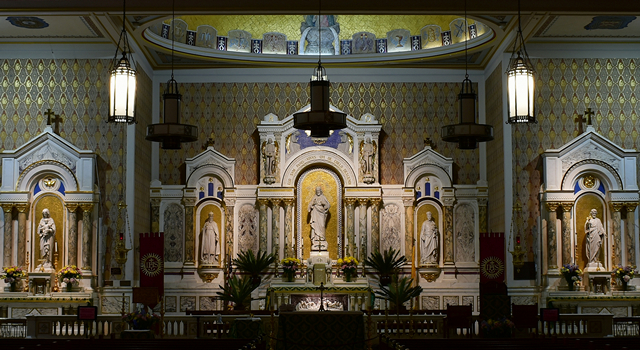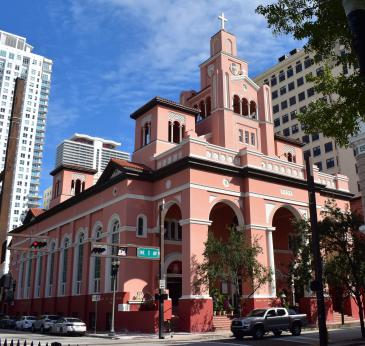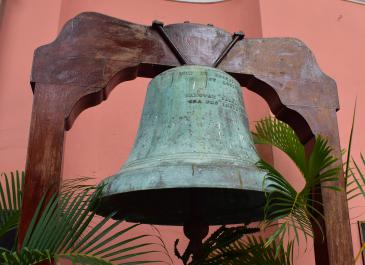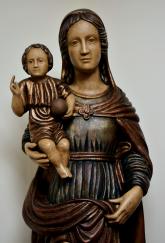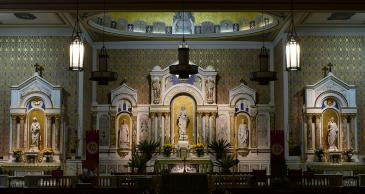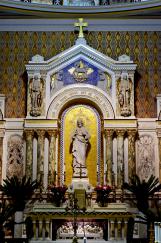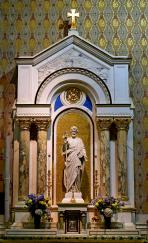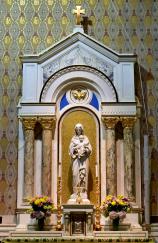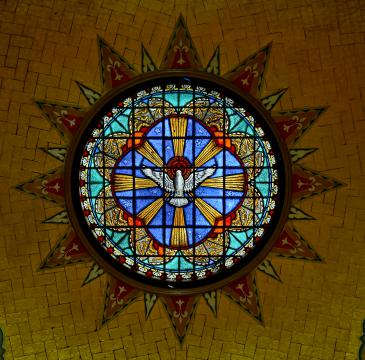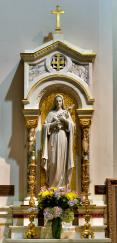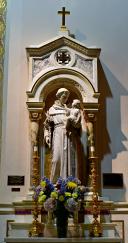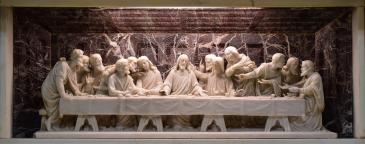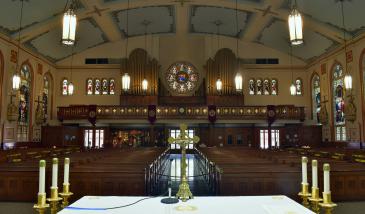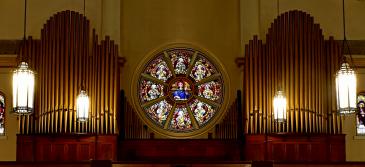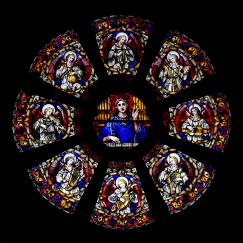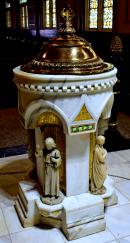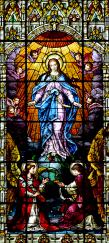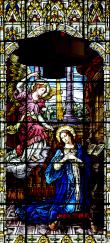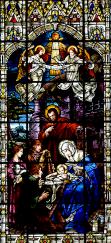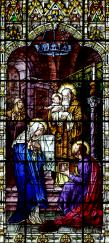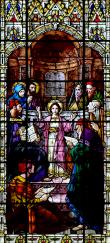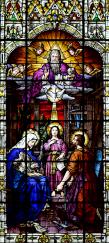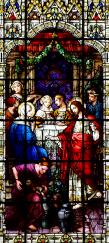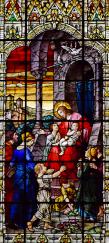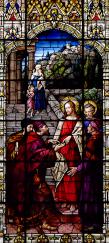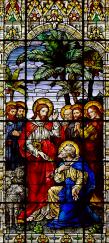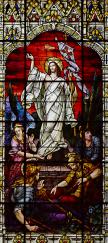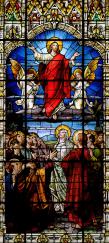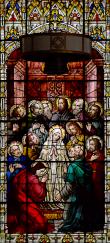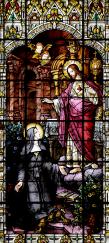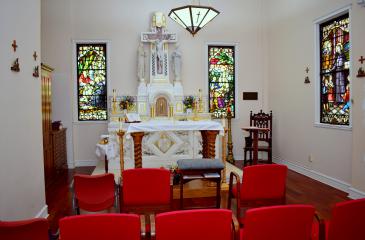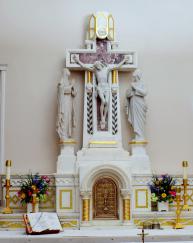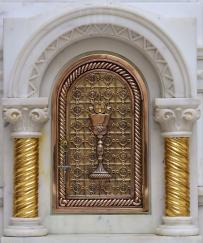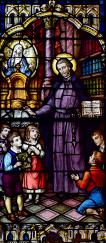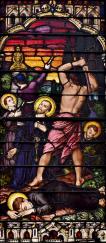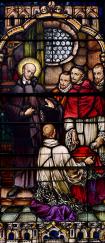By Jim Davis - Florida Catholic
Photography: JIM DAVIS | FC
MIAMI | The Archdiocese of Miami has a cathedral, the 12-story-high St. Mary's. And it has a basilica, the venerable St. Mary Star of the Sea. It even has a national shrine, Our Lady of Charity. But when people talk about a mother church, they often mean Gesu.
Gesu Church has stood in the same spot ever since its founding in 1896 — the oldest institution in the city on its original site, according to historian Paul George. She has taught children, hosted soldiers, fed the elderly, cared for refugees, and provided daily spiritual guidance.
Until the boom after World War I, Gesu was the only parish church between West Palm Beach and Key West. Its priests accordingly fanned out, saying Mass and paving the way for new parishes including St. Anthony in Fort Lauderdale and Sacred Heart in Homestead. Some of those parishes in turn have birthed other churches. By now, Gesu could be called the Grandmother Church.
The pink-painted structure follows a neo-classical style, with Arabesque towers popular elsewhere in Coral Gables and Opa-locka when it was built in the mid-1920s. Inside, the chancel is made of Italian marble, with gilded accents added this past November.
Lining the nave are Gothic windows of leaded crystal from Munich, Germany, picturing stories from the lives of Jesus and Mary. Overhead is an arched, embossed ceiling.
On the opposite wall, the rose window centers on St. Cecilia, the patroness of musicians. Around her, eight cherubim are seen playing medieval instruments. The window stands between the two clusters of the church's pipe organ.
As old as it is, Gesu Church stands on a deeper Catholic heritage. It was in 1567 that Don Pedro Menendez de Aviles, the founder of St. Augustine, landed in Miami and began a mission to the local Tequesta village. Jesuit missionaries ministered to the tribe, but they failed to make a lasting impact and left in the 18th century.
Only after William Wagner and his family settled here in the mid-1850s did Catholicism take firm root in the area. Wagner bought several acres and in 1872 began hosting priests for Mass. He then built a small, 10-by-40-foot wooden chapel in 1875.
The chapel burned down in 1892, but priests from elsewhere in the state periodically visited Miami to say Mass. The congregation was formally organized in 1896, the same year as the City of Miami — and John C. Reilly, the city's first mayor, was among the founders. It was named the Holy Name of Jesus Catholic Church, later nicknamed "Gesu," Italian for Jesus.
Oil and railroad magnate Henry Flagler donated five lots in downtown Miami, and another wood church went up, this one with 800 seats and an imposing, 86-foot spire. Attendance climbed and by the 1920s, people were actually waiting in line to come to church. The solution was the current 1,200-seat building, dedicated in 1925.
Gesu founded a school in 1904, staffed by Sisters of St. Joseph. Before it closed in 1982, it taught many future leaders in religion, government, even sports and entertainment — including singer-actor Desi Arnaz, 1951 Wimbledon tennis champion Doris Hart, and Steve Clark, who served as mayor both of Miami and Miami-Dade County. At least nine Gesu School alumni became priests.
The "Downtown Cathedral," as some called the church, also hosted soldiers and sailors from three wars, including the Spanish-American War. During World War II, its Servicemen's Club sponsored dances in the parish hall and Golden Glove boxing matches on the school roof. Many of them returned after the war as residents.
Over the decades, Gesu Church and its school have served as the hub — often the founder — of important South Florida institutions. They have included:
- The Friendly Society Hospital, founded in 1909, taking its name from Father A.B. Friend, Gesu's pastor at the time. The hospital grew and changed sites, until in 1917 it took its present name of Jackson Memorial Hospital.
- Catholic Charities, born during the Depression of the 1930s, and now an archdiocesan ministry.
- Operation Pedro Pan, which brought 14,000 unaccompanied children out of Castro's Cuba.
- Centro Hispano Catolico, which aided the first waves of Cuban exiles, and later those from Haiti and Nicaragua. From October 1959 to June 1968, the center handled more than 450,000 cases, according to historian George.
Gesu still offers daily Mass and confession, often drawing downtown office workers, and persisting even during downtown Miami's blight and crime of the 1980s. The church began a turnaround with the downtown revival starting in the late 1990s. Even before then, the church underwent repainting and restoration for its centennial in 1996.
The church also serves a full-course lunch each weekday for about 50 seniors — some of them undocumented immigrants — who come from all over Miami-Dade County. The seniors ministry drew a visit from Mother Teresa in 1974.
Seniors have benefitted as well from Gesu's discount flea market of donated clothing, plus classes for seniors on two dozen computers. Those outreaches have been suspended during the COVID pandemic, but the church plans to resume them when feasible.
